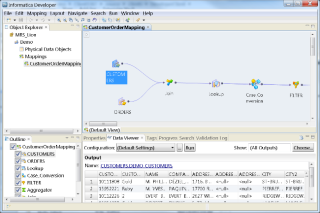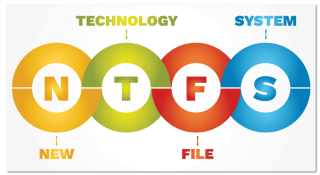Cómo instalar osTicket en Fedora 30
¿Usando un sistema diferente? osTicket es un sistema de tickets de soporte al cliente de código abierto. El código fuente de osTicket está alojado públicamente en Github. En este tutorial
TLS 1.3 is a version of the Transport Layer Security (TLS) protocol that was published in 2018 as a proposed standard in RFC 8446. It offers security and performance improvements over its predecessors.
This guide will demonstrate how to enable TLS 1.3 using the Apache web server on Fedora 30.
A/AAAA/CNAME DNS records for your domain.2.4.36 or greater.1.1.1 or greater.Check the Fedora version.
cat /etc/fedora-release
# Fedora release 30 (Thirty)
Create a new non-root user account with sudo access and switch to it.
useradd -c "John Doe" johndoe && passwd johndoe
usermod -aG wheel johndoe
su - johndoe
NOTE: Replace johndoe with your username.
Set up the timezone.
timedatectl list-timezones
sudo timedatectl set-timezone 'Region/City'
Ensure that your system is up to date.
sudo dnf check-upgrade || sudo dnf upgrade -y
Install the needed packages.
sudo dnf install -y socat git
Disable SELinux and Firewall.
sudo setenforce 0 ; sudo systemctl stop firewalld ; sudo systemctl disable firewalld
acme.sh client and obtain a TLS certificate from Let's EncryptInstall acme.sh.
sudo mkdir /etc/letsencrypt
git clone https://github.com/Neilpang/acme.sh.git
cd acme.sh
sudo ./acme.sh --install --home /etc/letsencrypt --accountemail [email protected]
cd ~
source ~/.bashrc
Check the version.
/etc/letsencrypt/acme.sh --version
# v2.8.2
Obtain RSA and ECDSA certificates for your domain.
# RSA
sudo /etc/letsencrypt/acme.sh --issue --standalone -d example.com --ocsp-must-staple --keylength 2048
# ECC/ECDSA
sudo /etc/letsencrypt/acme.sh --issue --standalone -d example.com --ocsp-must-staple --keylength ec-256
NOTE: Replace example.com in commands with your domain name.
Create sensible directories to store your certs and keys in. We will use /etc/letsencrypt.
sudo mkdir -p /etc/letsencrypt/example.com
sudo mkdir -p /etc/letsencrypt/example.com_ecc
Install and copy certificates to /etc/letsencrypt.
# RSA
sudo /etc/letsencrypt/acme.sh --install-cert -d example.com --cert-file /etc/letsencrypt/example.com/cert.pem --key-file /etc/letsencrypt/example.com/private.key --fullchain-file /etc/letsencrypt/example.com/fullchain.pem
# ECC/ECDSA
sudo /etc/letsencrypt/acme.sh --install-cert -d example.com --ecc --cert-file /etc/letsencrypt/example.com_ecc/cert.pem --key-file /etc/letsencrypt/example.com_ecc/private.key --fullchain-file /etc/letsencrypt/example.com_ecc/fullchain.pem
After running the above commands, your certificates and keys will be in the following locations:
/etc/letsencrypt/example.com/etc/letsencrypt/example.com_eccApache added support for TLS 1.3 in version 2.4.36. Fedora 30 system comes with Apache and OpenSSL that support TLS 1.3 out of the box, so there is no need to build a custom version.
Download and install the latest 2.4 branch of Apache and its module for SSL via the dnf package manager.
sudo dnf install -y httpd mod_ssl
Check the version.
sudo httpd -v
# Server version: Apache/2.4.39 (Fedora)
# Server built: May 2 2019 14:50:28
Start and enable Apache.
sudo systemctl start httpd.service
sudo systemctl enable httpd.service
Now that we have successfully installed Apache, we are ready to configure it to start using TLS 1.3 on our server.
Run sudo vim /etc/httpd/conf.d/example.com.conf, and populate the file with the following basic configuration.
<IfModule mod_ssl.c>
<VirtualHost *:443>
ServerName example.com
SSLEngine on
SSLProtocol all -SSLv2 -SSLv3
# RSA
SSLCertificateFile "/etc/letsencrypt/example.com/fullchain.pem"
SSLCertificateKeyFile "/etc/letsencrypt/example.com/private.key"
# ECC
SSLCertificateFile "/etc/letsencrypt/example.com_ecc/fullchain.pem"
SSLCertificateKeyFile "/etc/letsencrypt/example.com_ecc/private.key"
</VirtualHost>
</IfModule>
Save the file and exit.
Check the configuration.
sudo apachectl configtest
Reload Apache to activate the new configuration.
sudo systemctl reload httpd.service
Open your site via HTTPS protocol in your web browser. To verify TLS 1.3, you can use browser dev tools or SSL Labs service. The screenshots below show Chrome's security tab with TLS 1.3 in action.


You have successfully enabled TLS 1.3 in Apache on your Fedora 30 server. The final version of TLS 1.3 was defined in August 2018, so there’s no better time to start adopting this new technology.
¿Usando un sistema diferente? osTicket es un sistema de tickets de soporte al cliente de código abierto. El código fuente de osTicket está alojado públicamente en Github. En este tutorial
Using a Different System? WonderCMS is an open source, fast and small flat file CMS written in PHP. WonderCMS source code is hosted on Github. This guide wil
¿Usando un sistema diferente? October 1.0 CMS es un sistema de gestión de contenido (CMS) simple y confiable, gratuito y de código abierto creado en el marco de Laravel
Using a Different System? MyBB is a free and open source, intuitive and extensible forum program. MyBB source code is hosted on GitHub. This guide will sho
Using a Different System? Redaxscript 3.2 CMS is a modern and ultra lightweight, free and open source Content Management System (CMS) with rocket-fas
¿Usando un sistema diferente? NGINX se puede utilizar como servidor HTTP / HTTPS, servidor proxy inverso, servidor proxy de correo, equilibrador de carga, terminador TLS o cachin
¿Usando un sistema diferente? ImpressPages CMS 5.0 es un sistema de gestión de contenido (CMS) simple y efectivo, gratuito y de código abierto, fácil de usar y basado en MVC
¿Usando un sistema diferente? Pagekit 1.0 CMS es un sistema de administración de contenido (CMS) hermoso, modular, extensible y liviano, gratuito y de código abierto con
Using a Different System? Gitea is an alternative open source, self-hosted version control system powered by Git. Gitea is written in Golang and is
Using a Different System? Paste 2.1 is a simple and flexible, free and open source pastebin application for storing code, text and more. It was initiall
¿Usando un sistema diferente? ProcessWire CMS 3.0 es un sistema de gestión de contenido (CMS) simple, flexible y potente, gratuito y de código abierto. ProcessWire CMS 3.
Using a Different System? Omeka Classic 2.4 CMS is a free and open source digital publishing platform and Content Management System (CMS) for sharing digita
¿Usando un sistema diferente? MODX Revolution es un sistema de gestión de contenido (CMS) de nivel empresarial rápido, flexible, escalable, gratuito y de código abierto escrito i
¿Usando un sistema diferente? TaskWarrior es una herramienta de gestión de tiempo de código abierto que es una mejora en la aplicación Todo.txt y sus clones. Debido a th
Using a Different System? Lychee 3.1 Photo Album is a simple and flexible, free and open source photo-management tool which runs on a VPS server. It install
Using a Different System? HTMLDoc will dynamically parse Postscript (PDF 1.6) documents from correctly written Hypertext (HTML 3.2). This will allow you t
Using a Different System? Matomo (formerly Piwik) is an open source analytics platform, an open alternative to Google Analytics. Matomo source is hosted o
¿Usando un sistema diferente? Couch CMS es un sistema de gestión de contenido (CMS) simple y flexible, gratuito y de código abierto que permite a los diseñadores web diseñar
Introduction MyCLI is a command line client for MySQL and MariaDB that allows you to auto-complete and helps with the syntax of your SQL commands. MyCL
ZPanel, un panel de control de alojamiento web popular, se bifurcó en 2014 a un nuevo proyecto llamado Sentora. Aprende a instalar Sentora en tu servidor con este tutorial.
Aprende cómo instalar Vtiger CRM, una aplicación de gestión de relaciones con el cliente, en CentOS 7 para aumentar tus ventas y mejorar el servicio al cliente.
Esta guía completa le mostrará cómo configurar un servidor Counter-Strike 1.6 en Linux, optimizando el rendimiento y la seguridad para el mejor juego. Aprende los pasos más recientes aquí.
Los ataques de ransomware van en aumento, pero ¿puede la IA ayudar a lidiar con el último virus informático? ¿Es la IA la respuesta? Lea aquí, sepa que la IA es una bendición o una perdición
ReactOS, un sistema operativo de código abierto y gratuito, está aquí con la última versión. ¿Puede satisfacer las necesidades de los usuarios de Windows de hoy en día y acabar con Microsoft? Averigüemos más sobre este estilo antiguo, pero una experiencia de sistema operativo más nueva.
Whatsapp finalmente lanzó la aplicación de escritorio para usuarios de Mac y Windows. Ahora puede acceder a Whatsapp desde Windows o Mac fácilmente. Disponible para Windows 8+ y Mac OS 10.9+
Lea esto para saber cómo la Inteligencia Artificial se está volviendo popular entre las empresas de pequeña escala y cómo está aumentando las probabilidades de hacerlas crecer y dar ventaja a sus competidores.
Recientemente, Apple lanzó macOS Catalina 10.15.4, una actualización complementaria para solucionar problemas, pero parece que la actualización está causando más problemas que conducen al bloqueo de las máquinas Mac. Lee este artículo para obtener más información
13 Herramientas comerciales de extracción de datos de Big Data
Nuestra computadora almacena todos los datos de una manera organizada conocida como sistema de archivos de diario. Es un método eficiente que permite a la computadora buscar y mostrar archivos tan pronto como presiona buscar.




